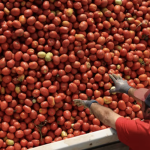Carbon Positive March Update
Added 2 years ago
By David France
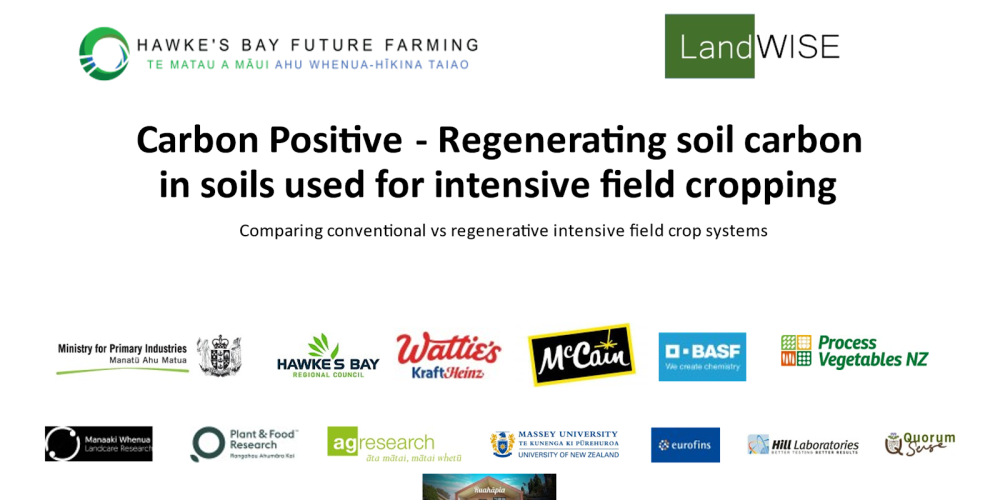
The Carbon Positive project aims to “Regenerating Soil Carbon in soils used to grow intensive field crops on the Heretaunga Plains”.
The trials compare three growing systems including conventional best practice, Hybrid combining the best of both and regenerative systems which aims to reduce soil tillage, use of chemicals and improve soil carbon as an indicator for healthy soils.
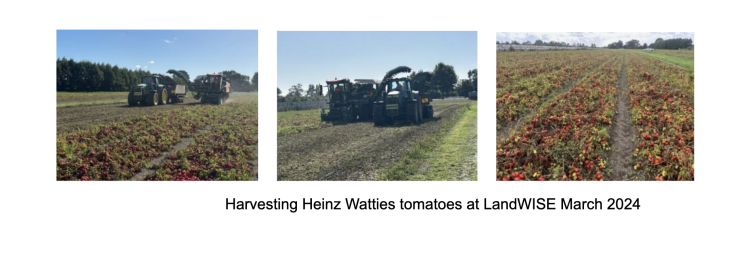
EIQ (Environmental Impact Quotient) Testing LandWISE Dan Bloomer Alex Dickson
One key measurement system used to compare the trials is the EQI toxicity measure which measures the field and ecological EIQ scores of the fungicides, herbicides and insecticides used in each trial.
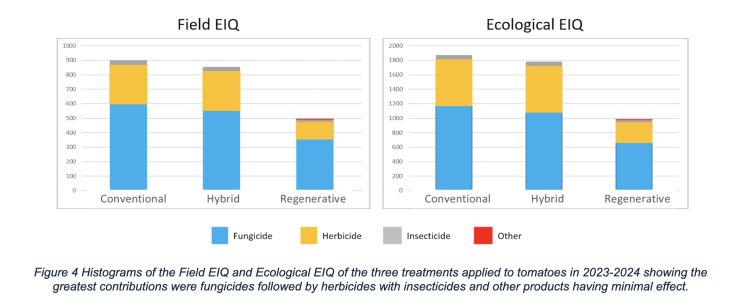
The relative toxicities of the crop protection programmes applied to the different treatments were compared using the Cornell University Environmental Impact Quotient (EIQ) model (Kniss & Coburn, 2015; Cornell University College of Agriculture and Life Sciences, 2024; Grant, 2024). The modelling shows that the impact of the regenerative crop protection programme was about half that of the other treatments (Figure 4). The regenerative treatment applied biological products and plant response elicitors in preference to standard chemical options and dropped copper sprays entirely. Herbicide application was also minimised, but not stopped. There was a higher weed pressure in the regenerative plots, but it was restricted to the inter-rows and not thought to effect yields.
LandWISE Activities Update March 2024- Tomato Harvest Alex Dickson - LandWISE
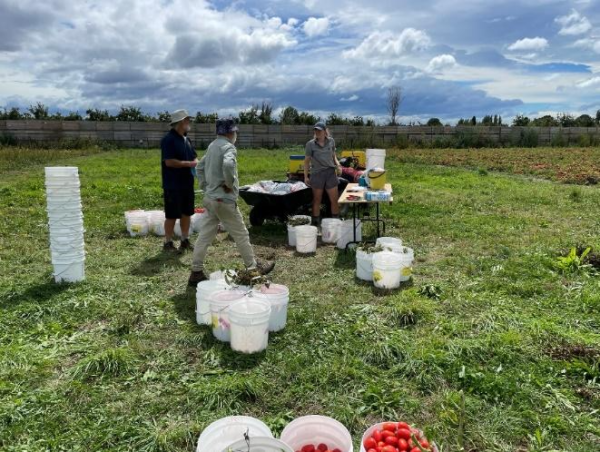
The Carbon Positive tomato crop was harvested on the 6th of March, marking the end of what has turned out to be a great season at the MicroFarm.
Yield was measured in two ways. Firstly, by taking hand measurements along the predetermined transect in each plot. Four 0.5 m x 2 m (1 m2) sub-plots were measured in each plot. Across the 12 plots over 650kg of tomatoes were picked by hand, graded into different colours (red, breakers, green, rots, vine) and weighed. Paid weight of fruit includes both the red and breaker fruit (anything that is between green and red). We had a team of eight people helping us pick tomatoes (either volunteered or volun-told), all of whom made the process seamless.
After hand cuts were done, the Watties harvesters came in to harvest each plot into its own gondola, tipped into its own bin (or two bins) and trucked to the factory to have factory quality assessment completed. The talented harvest crew carefully managed the task of coordinating the in-field harvest and the factory intake. Plots had between 10.91MT and 16.39MT net weight harvested (each plot is 0.108ha). After deductions paid weight per tonne was between 92.32MT/ha and 142.66MT/ha.
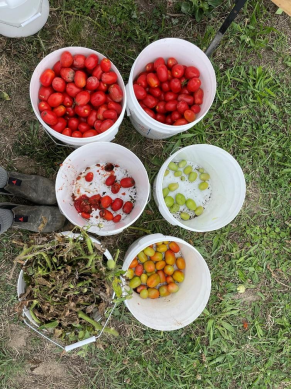
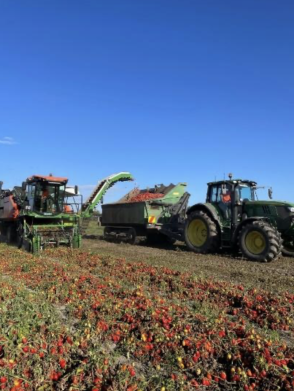
From the hand harvest data collected the Conventional Treatment yielded 140.63T/ha on average, the Hybrid 148.98T/ha, and the Regenerative 93.42T/ha. There is no statistically significant difference between yield for the Conventional and Hybrid treatment, however there is a significant difference between these treatments and the Regenerative treatment.
The factory yields were slightly different to the hand cut measurements for several reasons i.e., in the machine harvesting process there will be a proportion of tomatoes that can’t be picked up by the harvester (whereas in hand harvests all fruit was picked up), high and low yielding areas of a plot/block etc. Average factory paid yield for the Conventional treatment was 134.6 MT/ha, Hybrid 129.3 MT/ha, and the Regenerative 95.1 MT/ha.
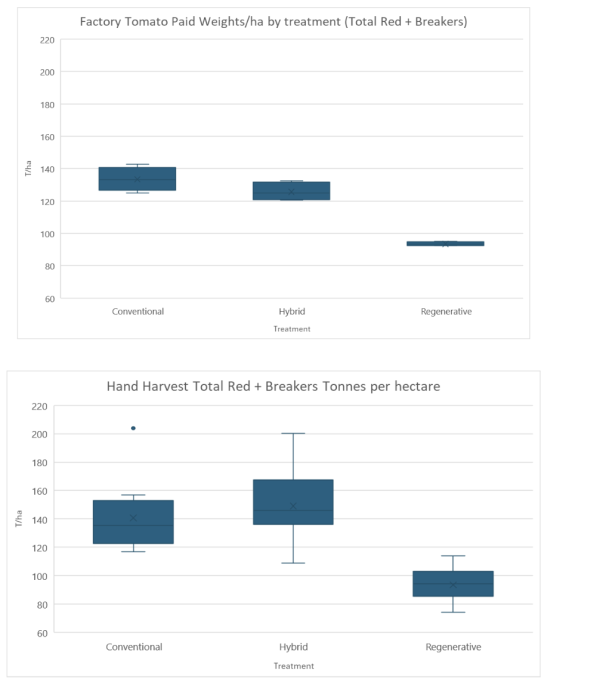
As part of the quality measurements green and rotten fruit was collected and weighed to calculate the percentage of out-of-spec fruit collected (both in hand measurements and factory).
Additional to measuring yield and fruit grading for quality, samples were collected and analysed for brix, dry matter, Hill laboratory analysis (nitrogen percentage and carbon percentage) for both fruit and vine, and pesticide residues. This data will be analysed and report on over the coming weeks.
Looking ahead, cover crops will be planted at the end of this week, followed by a deep subsoil aerator to undo some of the compaction that has occurred over the last 12 months (or more). The Conventional treatment will be planted in an annual ryegrass, the Hybrid and Regenerative will be planted in a diverse mix that has oats, clover, tillage radish, sunflowers and buckwheat in it. The Conventional and Hybrid treatments will be planted in peas in early spring. All three treatments will be planted in beans in December. More to come on this later in the year.
Join the conversation
Jim Galloway - Apr 2, 2024, 8:18 PM
Really great info thanks. Will economic data be coming out? Why isn't the regen area getting planted in peas so will it be grazed to compete for some income otherwise it will be well behind economically next year?
Thanks
Leave a comment
All comments are reviewed before they are published on the website. Your email address will not be published.
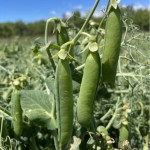
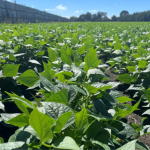

Community Engagement and Knowledge Sharing Strengthen the Carbon Positive Project
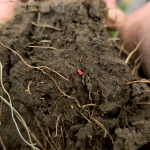
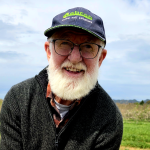
Farewell to Trustee Phil Schofield – A Foundational Leader of the HBFFCT
